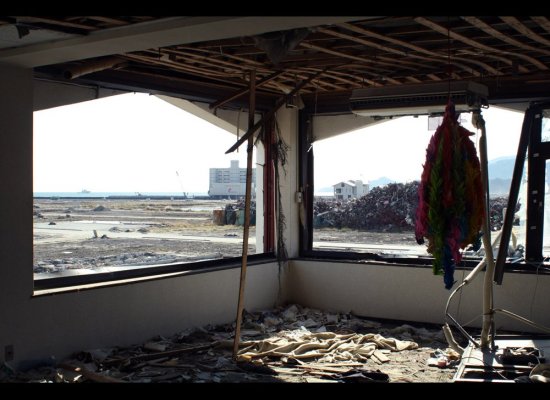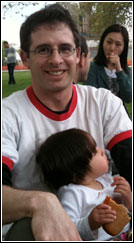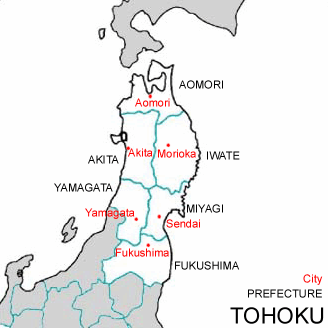JETAA Southern California fundraiser aids Smile Kids Japan efforts to support children orphaned by 3/11 disaster
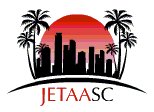 Via JETAA Southern California:
Via JETAA Southern California:
THANKS to everyone who came to the JETAASC fundraiser to benefit orphans of the Great East Japan Earthquake and Tsunami!! Your efforts helped to raise over $800 for Smile Kids Japan, the organization founded by JET alum Mike Maher-King (Fukui-ken, 2006-11). The support is heartfelt and the cause is completely a result of JET Program Participants’ efforts. If you wanted to come but could not make it, you can read more about Smile Kids Japan and how to donate here.
volunteerAKITA’s Paul Yoo recognized for National Volunteer Week by Beliefnet.com
In honor of National Volunteer Week, Beliefnet.com has nominated volunteerAKITA’s Paul Yoo for April’s Most Inspiring of the Month for Paul’s work with The Fruit Tree Project and other Tohoku relief work.
Go to the link below to vote for Paul.
http://www.beliefnet.com/Inspiration/Most-Inspiring-of-the-Month/April/Nominees.aspx?p=2
Perspectives: “A Glass Half Full: Japan’s Disaster Response at One Year” by James Gannon
The below article by Jim Gannon (Ehime-ken, 1992-94), Executive Director of the Japan Center for International Exchange (JCIE/USA), appeared originally on Smart Assets: The New York Philanthropy Blog.
“A Glass Half Full: Japan’s Disaster Response at One Year”
Here’s an excerpt:
One constant refrain in the disaster zone is the need for more effective mental health interventions. Women who lost family members, men who are ashamed that they can no longer support their families, and children traumatized by the disaster are all grappling with psychological trauma. In response, numerous Japanese nonprofits have established salons and other kokoro no kea (literally, “caring for the heart”) programs to give survivors opportunities to socialize, but these tend be rudimentary in nature, with little input from experienced mental health professionals, and they often fail to engage people at risk who are unlikely to seek out support on their own. Overseas funders can make a difference by encouraging and supporting more specialized and nuanced approaches.
Greater support is also needed for economic revitalization. A number of innovative programs have been launched to jumpstart local economies. In Kamaishi, for instance, the Fuji Social Welfare Council has started renting food trucks to unemployed chefs who lost their restaurants so they can get back on their feet. The trucks also help stimulate economic activity by gathering where new shops are opening in order to attract local residents. Meanwhile, numerous groups are pioneering new methods for small donor support of fisheries and oyster farmers in return for promised portions of future harvests. However, these efforts are only a drop in the bucket, and much greater investment is required.
A third area where funding from the United States and elsewhere can have a particularly significant impact is non-governmental organization (NGO) capacity building. Hundreds of small nonprofits have been established in the wake of the disaster, and while many will eventually fail, others have the potential to prosper and produce the next generation of Japan’s nonprofit leaders. However, the nonprofit sector can only live up to its potential if it becomes more professionalized and if the infrastructure that supports it is strengthened.
Taylor Anderson honored at MLB opening day game in Tokyo
Major League Baseball honored Taylor Anderson and several other tsunami relief heroes at it’s opening day game between the Seattle Mariners and Oakland A’s held in Tokyo on March 28. Taylor’s parents, Andy and Jean, were in attendance, and Andy threw out the first pitch.
Here’s a really nice article from the Major League Baseball website: “Tsunami Relief Heroes Honored at Opener” (Well worth reading for a variety of reasons including the stories about the other heroes. Below is a quote.)
Anderson didn’t know if he could summon the strength to get the ball to home plate, so he looked down at that pink phone.
“I had Taylor’s cell phone and her straps … because they remind me of her, and when I think about her, I feel stronger, so I was able to get the ball in there,” Anderson said. “That’s what I thought about: Taylor.”
Here’s are links to two photos of Andy Anderson throwing out the first pitch: http://www.47news.jp/photo/395455.php and http://headlines.yahoo.co.jp/hl?a=20120328-00000831-yom-base.view-000
Here’s a link to an article on the Nikkan Sports website (in Japanese): http://www.nikkansports.com/baseball/mlb/news/f-bb-tp2-20120328-924778.html
Taylor Anderson Remembered by Many
Via the JETAA USA website:
The Anderson Family, who has done so much to further Taylor’s vision of bridging the US and Japan, participated in a memorial service at Taylor’s alma mater, Randolph Macon College. The memorial was covered by both NHK World and the local CBS news station in Virginia. Ambassador Fujisaki was also in attendance as a speaker for the event.
To see the media coverage click below:
- NHK World: Americans Honor Victim
- CBS Channel 6 News: Local Teacher Remembered One Year After Tsunami
- NHK written coverage (in Japanese)
Additionally, here are some links to coverage gathered by a friend of the Andersons and forwarded by Andy:
- Article on the Randolph-Macon college website about the event.
- March 8, 2012: WCVE-FM (NPR) local NPR correspondent Dan Rosenthal interviewed national NPR correspondent Yuki Noguchi for a preview of the Taylor Anderson/Japan Foundation lecture. You can listen to the interview by clicking anniversary.
- March 13, 2012: The Asahi Shimbun (Japanese newspaper) sent a reporter to the lecture and also covered a pre-lecture news conference held by R-MC. You can read the article by clicking on Asahi Shimbun.
- March 12, 2012: NHK World Japanese Television sent a reporter to campus several times to interview the Andersons (Taylor’s parents) as well as the March 11 lecture. You can watch the story by clicking on NHK. Note: This story is only available for viewing through this weekend.
March 12, 2012: Here is a look at some local coverage:
- Richmond Times-Dispatch: http://www2.timesdispatch.com/news/2012/mar/12/randolph-macon-program-recalls-student-who-died-ja-ar-1758051/
- WWBT-TV12 (NBC): http://www.nbc12.com/story/17135121/local-family-still-copes-with-daughters-death-after-japan-tsunami
- WTVR-TV6 (CBS): http://wtvr.com/2012/03/11/local-teacher-remembered-one-year-after-japan-tsunami/
- WRIC-TV8 (ABC): http://www.wric.com/story/17139323/randolph-macon-honors-taylor-anderson
- WUSA-TV9 (Washington, DC): http://www.wusa9.com/news/nation-world/article/196158/381/Randolph-Macon-Honors-Va-Teacher-Who-Died-In-Japan
- WSET-TV13 (Lynchburg, VA): http://www.wset.com/story/17139178/randolph-macon-honors-va-teacher-who-died-in-japan
- WCAV-TV19 (Charlottesville, VA): http://www.newsplex.com/news/headlines/Va_College_Honors_Teacher_Who_Died_in_Japan_Disasters_142457475.html
- WHSV-TV3 (Harrisonburg, VA): http://www.whsv.com/news/headlines/Randolph-Macon_Honors_Va_Teacher_Who_Died_in_Japan__142361425.html
Huffington Post article by Rikuzentakata JET alum Sarah Ruddy
![]() Former Rikuzentakata JET Sarah Ruddy, a web producer for New York Magazine, was recently by Huffington Post to write an article in connection with the one-year anniversary of the 3/11 Tohoku earthquake and tsunami. (On a side note, I noticed that Sarah mentions another JET alum in the article, author/humor writer Will Ferguson who wrote Hitching Rides With Buddha among other books.)
Former Rikuzentakata JET Sarah Ruddy, a web producer for New York Magazine, was recently by Huffington Post to write an article in connection with the one-year anniversary of the 3/11 Tohoku earthquake and tsunami. (On a side note, I noticed that Sarah mentions another JET alum in the article, author/humor writer Will Ferguson who wrote Hitching Rides With Buddha among other books.)
Here’s the article:
After The Tohoku Earthquake: ‘I Gave Up My Family For Dead’
http://www.huffingtonpost.com/sarah-ruddy/after-the-tohoku-earthqua_b_1335092.html#s770689
Here’s an excerpt:
My decision to go back was not about whether I should but how soon I could. I was determined to do whatever I could to help. I was often asked if I was afraid of another earthquake and tsunami occurring or how the radiation would effect me. There are plenty of dangers in the world that we can’t predict or prevent. They shouldn’t stop us from experiencing life.
I ended up going last November, seven months after the tsunami hit. I was welcomed by friends and generously offered a place to stay. I heard their stories of that day and the seven months that followed. The improvements made in that time were incredible.
I volunteered in Rikuzentakata and Ofunato, the city immediately north, and returned to my former schools to help out with classes. The people I volunteered with were from all over Japan, including students who were on break, retired couples who had free time and curious people who wondered how anyone could have survived. I spent long hours digging through fields of sediment and debris.
International Educator magazine article remembers Monty and Taylor
Thanks to JETAA Music City’s Terry Vo (Kumamoto-ken, 2007-09) and JETAA Northern California’s Peter Weber (Saitama-ken, 2004-07) (both of whom work as JET Coordinators at their local Consulates) for sharing this excellent International Educator magazine article (“Overcoming Chaos“)about the various ways the Tohoku disaster affected a variety of international education programs, including the JET Program. The writer does a nice job of capturing the spirit and essence of Monty Dickson and Taylor Anderson towards the end of the article, and what we lost when we lost them.
Here’s the link to the article (PDF): http://www.nafsa.org/_/File/_/ie_marapr12_japan.pdf
Notably, the article also quotes JET alum Kate Maruyama who is the Japan programs manager for CET Academic Programs in Washington, D.C. And it indicates that Ashley Mar, the UC Santa Barbara biology student who happened to be studying abroad at Tohoku Biology University on 3/11 and was required to return to the U.S. despite her desire to stay, is now applying for the JET Program.
Via the JNY-Japanese New Yorker Facebook group.
Return on JET-vestment: Fukushima JET alums help bring Fukushima youth taiko group to DC for Cherry Blossom Festival
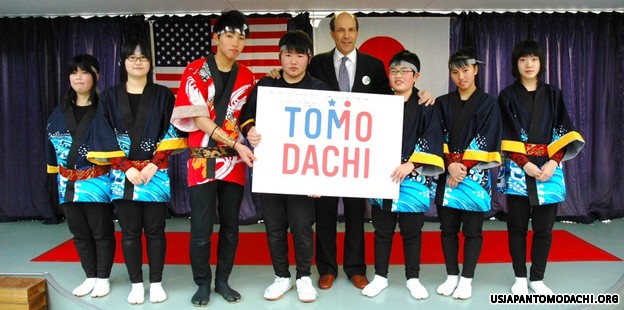
The Fukushima Taiko Drummers meet U.S. Ambassador to Japan, John V. Roos, before they head to D.C. in April.
****************
JETAA DC members Michelle Spezzacatena (Fukushima-ken, Kawamata-cho, 2002-05) and Darryl Wharton-Rigby (Fukushima-ken, Kawamata-cho, 2005-07) were both teachers in the town of Kawamata in Fukushima Prefecture. Michelle was there from 2002-2005 and overlapped one week with Darryl, who was there from 2005-2007. Thanks to the magic of Facebook they were able to keep in contact throughout the years. After the earthquake and subsequent nuclear disaster, Darryl and Michelle were talking about how they could help their Japanese hometown. The idea of bringing the taiko group to DC for the Cherry Blossom Festival was born out of those discussions. (Editor’s note: In addition to Michelle’s work on this project, she also serves on the JETAA USA Fund Committee and previously served as JETAA DC President.)
In Michelle’s words: “We brought the idea to the Japan America Society in DC who immediately fell in love with it too. Thanks to the generous financial support of the US Japan council, the project was fully funded. We have been working with Anna Cable (USJC), Ambassador Malott (JASW), JET alum Marc Hitzig (JASW), Shigeko Bork (former Kawamata resident now living in DC) and Masako Mori (Diet member from Fukushima) on the project. Darryl and I are the co-coordinators and have been doing most of the heavy lifting. We are also officially part of the TOMODACHI Initiative.”

Fukushima JET alums Michelle Spezzacatena (2002-05) and Darryl Wharton-Rigby (2005-07)
“The students will be here from April 7-17 and they have a jam packed schedule. We will be doing a homestay program, they will be performing at numerous locations including the National Cherry Blossom Parade/Sakura Matsuri/Kennedy Center, we will be sightseeing and hopefully we’ll be doing a meet and greet with the new Orioles player, Wada-san and a Orioles/Yankees game day performance at Orioles Park. Darryl and I are excited to be with them the entire time they’ll be in the US.”
Michelle adds: “NHK Japan is also working on a piece on Darryl and I in the context of what JETs are doing to help Japan after the earthquake. They have been following us around to different events and will be for another two weeks. The piece will run on NHK Japan’s News9 broadcase during the first week of April when the anchor is doing the show live from DC. They will also try to do an English version to show on NHK World.”
*********
Below is a press release about the taiko group’s upcoming performance at the National Cherry Blossom Festival.
FOR IMMEDIATE RELEASE
CONTACT: Michelle Spezzacatena- michellespezzacatena@gmail.com
STUDENT TAIKO GROUP FROM FUKUSHIMA INVITED TO NATIONAL CHERRY BLOSSOM FESTIVAL
Tohoku tourism promotion video
Thanks to JETAA Sydney’s Sharon Van Etten for sharing this video via JETAA Sydney’s Facebook group, titled “Colorful Emotions” (sassuga Japanese marketing style), put out as part of a Tohoku tourism promotional campaign:
(I would’ve posted the video, but they disabled the embed code for some reason.)
JET alum journalist Graham Shelby’s latest article on Fukushima 03.11.12
Graham Shelby (Fukushima-ken, Ishikawa-shi, 1994-97) has published a thoughtful piece on Fukushima, this one on Kentucky news site, Kentucky.com, in addition to previous radio and written pieces he has done for NPR and other news outlets.
“Quake, tsunami a year ago refreshed Kentuckian’s memories of time in Japan”
By Graham Shelby – contributing write
Posted: 12:00 AM on March 11, 2012
Twenty-three years old and eager to get out of my hometown, I left Lexington for Japan. In the summer of 1994, I took a job teaching English in Ishikawa, a small town surrounded by rice fields and forested hills in Fukushima Prefecture, about 100 miles north of Tokyo.
Click here to read the full article: http://www.kentucky.com/2012/03/11/2104978/quake-tsunami-a-year-ago-refreshed.html#storylink=misearch
The MUD Project: Update from Colin Rennie 03.13.12
An update from The MUD Project, an ongoing Tohoku relief effort organized by JET alum Colin Rennie (CIR Yamagata-ken, 2007-10). Click here to see previous updates by Colin on YouTube:
March 13, 2012
March 11, 2012
LIVE YOUR DREAM: The Taylor Anderson Story
*******************
“LIVE YOUR DREAM: The Taylor Anderson Story”is a film project by documentarian Regge Life who is currently seeking support via Kickstarter to help fund the full production of the film.
ABOUT THIS PROJECT
This film is a story about Taylor Anderson and all the young people who travel the world trying to make a difference. Taylor was an extraordinary American who dedicated herself to teaching Japanese children, living her dream right up to the events of March 11, 2011. The earthquake and tsunami in Japan was a disaster that no one could have expected. In my 21 years of working on Japan based projects, I had witnessed earthquakes, but never the devastation of a tsunami.
I had just completed REASON TO HOPE, a film about the 2010 earthquake in Haiti, so I understood all of the events related to the aftermath of an earthquake, but what would be the aftermath when an earthquake was followed by a tsunami and in the case of Japan, a possible nuclear disaster.
CLICK HERE to read more on the Kickstarter site and to help support this project
“American View” interview with JETwit publisher Steven Horowitz on JET involvement in Japan’s recovery efforts
Update 03.13.12: Realized I neglected to mention in the interview The MUD Project, an ongoing Tohoku relief effort organized by JET alum Colin Rennie (CIR Yamagata-ken, 2007-10).
Update 03.12.12: Here’s the interview translated into Japanese
“American View,” a quarterly magazine published by the Press Office of the U.S. Embassy in Tokyo, recently interviewed JETwit publisher Steven Horowitz (Aichi-ken, 1992-94) about the role of JETs and JET alumni in connection with Japan’s recovery efforts following the 3/11 disaster.
American JETs Rally for Japan in Myriad Ways
http://amview.japan.usembassy.gov/en/jet-alumni/
American View: What is unique about disaster relief activities by JET program participants and alumni?
Steven Horowitz: The connection we have to the affected areas and to each other. And the language skills and ability to communicate directly with people in the communities. When you work for the school system, you really get connected to the community. You understand how things work, how kids evolve into adults. You’re part of the community. As a result, JETs are able to identify needs and then reach out to a global community to help fill them in unique ways. I think JETs and JET alumni in some ways were better able to identify needs on the ground than some of the larger, more removed relief organizations, and especially with regard to education-related needs.
問 現役・元JET参加者による復興支援活動にはどのような特徴がありますか。
答 被災地との絆やJET参加者同志のつながり、そして地元の人たちと直接意思を疎通できる日本語能力があります。学校制度の中で働けば地域社会と真のつながりができます。物事の仕組みや子どもが大人になっていく過程を理解するようになります。地域社会の一員となるのです。ですからJET参加者たちは、地域のニーズを見極めた上で国際社会に働きかけ、独自のやり方でそうしたニーズを満たす支援ができます。現場から遠く離れた大規模な支援団体よりも現役・元JET参加者たちの方が、いろいろな点で現場のニーズ、特に教育関係のニーズに関してより確実に把握できると思います。
*CLICK HERE to read the full interview in English
*CLICK HERE for the Japanese version
There’s so much going on in connection with 3/11 that it feels overwhelming to try and capture everything. Life has been busy with all of life’s things, and I realized that I was trying to put off thinking about 3/11 in some important ways. So I finally stopped myself and thought back to March 11, and remembered that initially I was frantically gathering information from every source I could find and trying to organize it in a way that would be helpful to JET alumni, family of JETs, and anyone else outside Japan who was seeking information on people and areas.
The post below is much of the information gathered in real time (at the time) and gradually organized into what I hoped were helpful ways. Reading through it brought back a range of challenging feelings for me as well as a comparative perspective on how things big and small felt then versus now. Feel free to read through and share your own thoughts and memories in the comments section below if you like.
One additional thought: Taylor and Monty, you are not forgotten.
************************
March 2011
************************
Last update: 10:06 pm NY time March 14. Email jetwit [at] jetwit.com with any updates you’d like to share. (Apologies for delays. I’m taking care of my 14 month old daughter while trying to keep doing things on the computer.)
(10:06 pm) “I talked to a person from the US embassy today. The US has not issued any evacuation for it’s citizens. If you want to escape you have to do it on your own, but they said if we have something we need to call them. I told him food and he said he needs food himself, so everyone is in that situation. We are now strictly rationing our food. Do not expect any help from the US government.”
(9:38 pm) From JET Greg Lekich in Sendai: “Everyone, I’m heading over to the home of Iain Campbell where we will set up a system for dispatching people on the ground to check on people. Will be back online a bit later.”
(9:36 pm) “Report from Furukawa area. Northern rural areas are fine. Furukawa not too bad. Power and communication sitiation though still not reliable.”
(9:32 pm) Iwate Grass Roots Aid Facebook Group
9:05 pm “NEWS on CTV: Japanese government spokesman reporting that many northern communities are still cut off and have not been reached yet :(”
Shiogama (6:27 pm NY time): A photo of Shiogama High School and some of the survivors. http://twitpic.com/49gcsb
Shiogama (via JET alum friend’s FB) (5:53 pm NY time Monday, March 14): Read More

